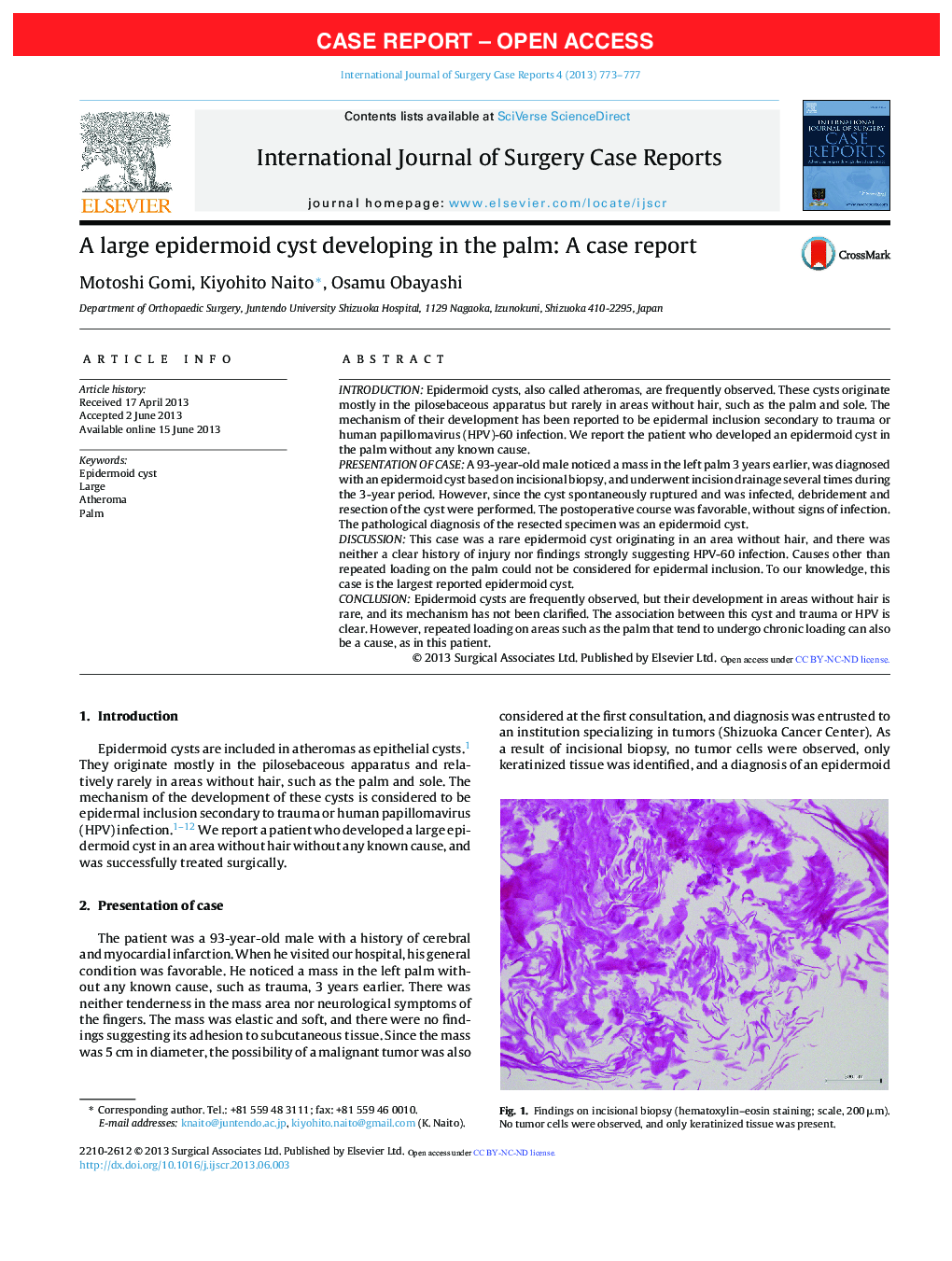| Article ID | Journal | Published Year | Pages | File Type |
|---|---|---|---|---|
| 4289813 | International Journal of Surgery Case Reports | 2013 | 5 Pages |
INTRODUCTIONEpidermoid cysts, also called atheromas, are frequently observed. These cysts originate mostly in the pilosebaceous apparatus but rarely in areas without hair, such as the palm and sole. The mechanism of their development has been reported to be epidermal inclusion secondary to trauma or human papillomavirus (HPV)-60 infection. We report the patient who developed an epidermoid cyst in the palm without any known cause.PRESENTATION OF CASEA 93-year-old male noticed a mass in the left palm 3 years earlier, was diagnosed with an epidermoid cyst based on incisional biopsy, and underwent incision drainage several times during the 3-year period. However, since the cyst spontaneously ruptured and was infected, debridement and resection of the cyst were performed. The postoperative course was favorable, without signs of infection. The pathological diagnosis of the resected specimen was an epidermoid cyst.DISCUSSIONThis case was a rare epidermoid cyst originating in an area without hair, and there was neither a clear history of injury nor findings strongly suggesting HPV-60 infection. Causes other than repeated loading on the palm could not be considered for epidermal inclusion. To our knowledge, this case is the largest reported epidermoid cyst.CONCLUSIONEpidermoid cysts are frequently observed, but their development in areas without hair is rare, and its mechanism has not been clarified. The association between this cyst and trauma or HPV is clear. However, repeated loading on areas such as the palm that tend to undergo chronic loading can also be a cause, as in this patient.
